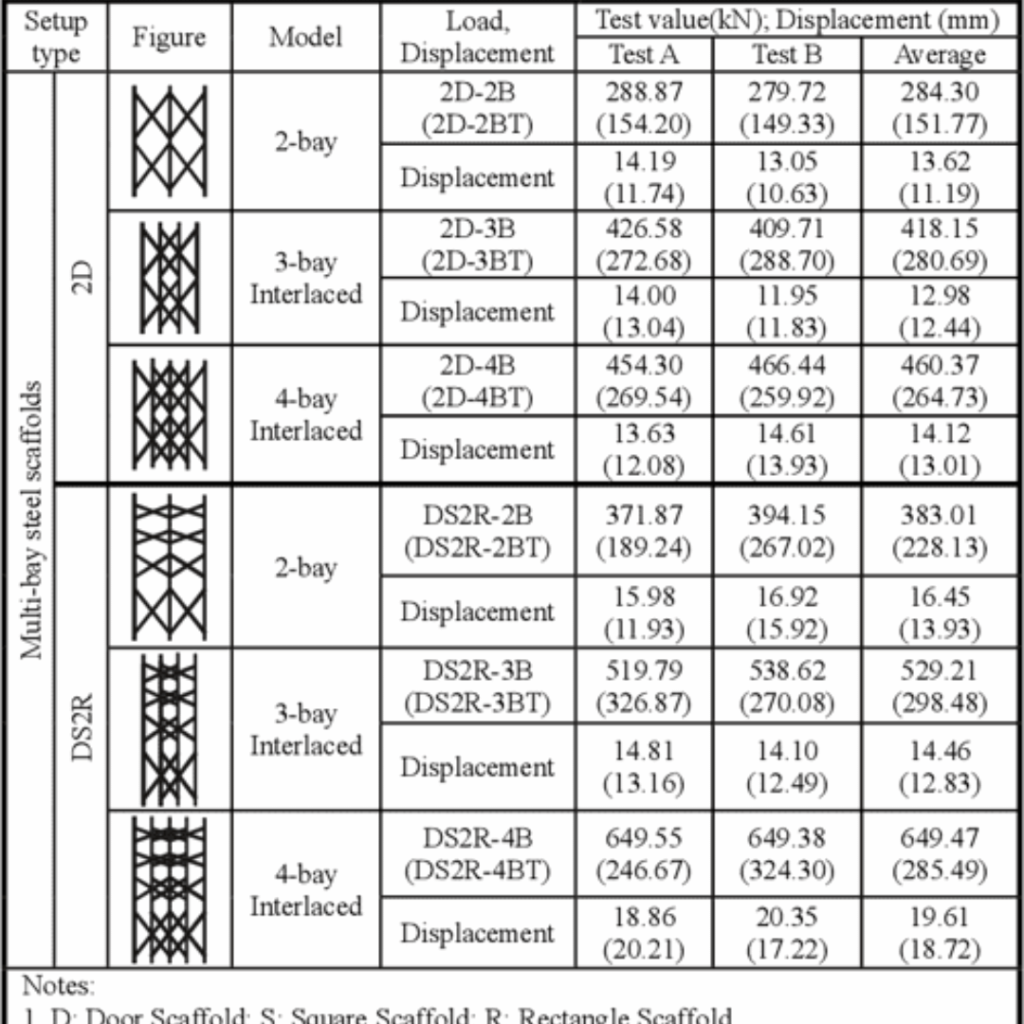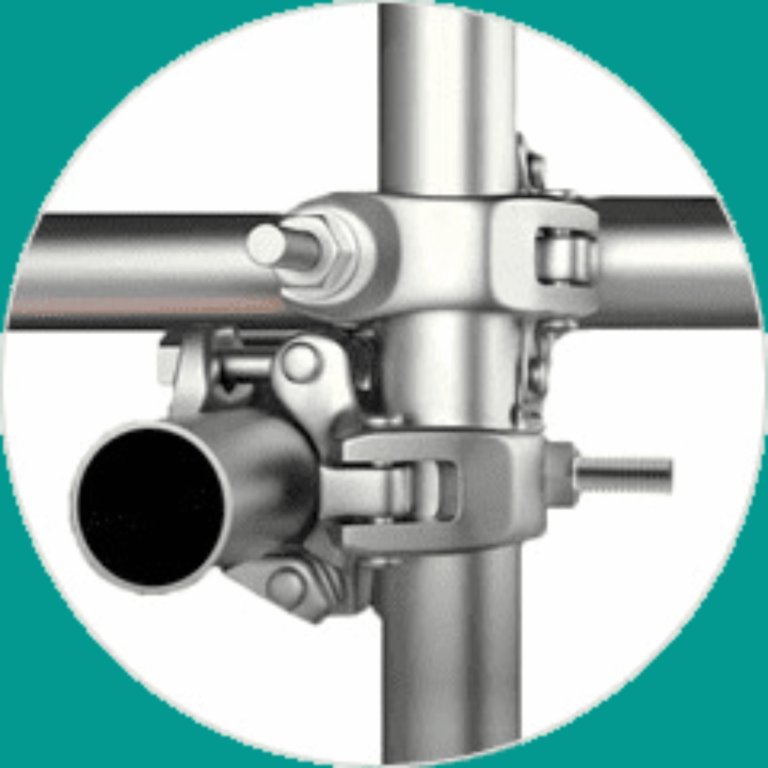Phone:
(+65)8319-0742
When it comes to scaffolding, safety is paramount. A crucial aspect of scaffold safety is understanding the maximum intended load limits. In this section, we will explore the concept of scaffold load capacity and its significance in ensuring a secure working environment. We will also delve into the relevant regulations set by the Occupational Safety and Health Administration (OSHA) governing scaffold weight limits.
Key Takeaways:
- Knowing the maximum intended load limits of scaffolding is vital for ensuring worker safety.
- OSHA regulations provide guidelines for scaffolding weight limits to prevent accidents and structural failures.
- A scaffold’s load capacity is influenced by various factors, including its design, materials used, and configuration.
- Exceeding a scaffold’s weight limit can lead to instability, collapses, and jeopardize worker safety.
- Regular inspections and adherence to safety guidelines are essential for maintaining scaffold safety.
What is a Scaffold's Maximum Intended Load?
Understanding the maximum intended load of a scaffold is crucial for ensuring its safety and stability. The scaffold load rating refers to the weight capacity of scaffolding, indicating the maximum amount of weight it can safely support. This rating is determined by various factors, such as the scaffold’s design, materials used, and specific configuration.
The weight capacity of scaffolding can vary based on the type of scaffold, its dimensions, and the quality of its construction. To provide clear guidelines for determining a scaffold’s load capacity, industry standards often provide scaffold load capacity charts. These charts outline the maximum intended load for different types of scaffolds based on their design and material specifications.
When considering the weight capacity of scaffolding, it is important to account for both the dead load and the live load. The dead load refers to the weight of the scaffold structure itself, including the frames, platforms, and accessories. The live load, on the other hand, refers to the weight of workers, equipment, and materials placed on the scaffold during construction or maintenance activities.
Factors that influence a scaffold’s load capacity include the quality and structural integrity of the scaffold components, such as the tubes, couplers, and platforms. The stability of the scaffold’s base and the adequacy of its bracing and anchoring systems also play a significant role in determining its weight capacity.
Image:
| Scaffold Type | Weight Capacity |
|---|---|
| Tube and Coupler | 10,000 lbs |
| Frame | 5,000 lbs |
| System | 8,000 lbs |
Table: Scaffold Load Capacity Chart
As shown in the scaffold load capacity chart, different types of scaffolds have different weight capacities. It is crucial to consult the manufacturer’s specifications and adhere to the load limits indicated in the chart to ensure the safety of the scaffold and its occupants.
By understanding the scaffold load rating, weight capacity of scaffolding, and referring to scaffold load capacity charts, workers can make informed decisions in selecting and using scaffolds that meet their specific needs while ensuring compliance with safety regulations.
Importance of Scaffold Load Capacity
Understanding and adhering to scaffold load capacity limits is of utmost importance for ensuring a safe working environment. It is crucial to consider the potential risks associated with exceeding scaffold weight limits, as doing so can lead to structural instability, collapse, and jeopardize the safety of workers.
By following scaffold safety guidelines and adhering to weight restrictions, the hazards posed by overloaded scaffolds can be mitigated. These guidelines provide essential instructions and precautions to ensure the proper use of scaffolding equipment. Adhering to weight restrictions not only prevents accidents but also promotes a secure and productive work environment.
The Dangers of Exceeding Scaffold Weight Limits
Exceeding the weight limit of a scaffold can have severe consequences. The primary concern is the structural integrity of the scaffold, which may be compromised under excessive weight. This can result in the collapse of the scaffold, endangering the lives of workers on and around it. Additionally, the increased load can strain the scaffold’s components and lead to premature wear and tear, reducing its overall stability and safety.
Furthermore, overloading a scaffold can create an imbalance, making it more prone to tipping or tilting. This instability poses significant risks to workers who rely on the scaffold for support and stability while performing their tasks. It can also create hazards for those working in close proximity, such as falling objects or debris resulting from a scaffold collapse.
Importance of Scaffold Safety Guidelines
Scaffold safety guidelines provide a comprehensive set of instructions to ensure safe and responsible usage. They cover topics such as proper assembly and disassembly procedures, load capacity limits, fall protection measures, and regular inspections. By following these guidelines, workers can minimize the risks associated with working on scaffolds and enhance overall safety on the job site.
These guidelines are designed to address common safety concerns and provide practical recommendations for safe and efficient scaffold use. They also emphasize the importance of proper training and supervision of workers using scaffolding equipment. Employers and workers both have a responsibility to adhere to these guidelines and prioritize safety in all scaffold-related activities.
The Role of Weight Restrictions in Mitigating Hazards
Weight restrictions play a crucial role in ensuring the safe use of scaffolding equipment. They are based on the load capacity and structural design of each scaffold, taking into account factors such as materials used, scaffold configuration, and intended use. Adhering to weight restrictions helps maintain the structural integrity of the scaffold, reducing the likelihood of accidents and injuries.
Weight restrictions are typically determined and communicated through scaffold load capacity charts or specific manufacturer guidelines. These guidelines specify the maximum intended load for different types of scaffolds and provide clear instructions on load distribution and weight limits. Adhering to these restrictions ensures that the scaffold remains stable and capable of supporting the load, minimizing the risk of structural failure or collapse.
OSHA Regulations on Scaffold Weight Limits

The Occupational Safety and Health Administration (OSHA) has established comprehensive regulations to ensure the safety of workers who use scaffolding in their work. These regulations include guidelines and standards for scaffold weight limits, load ratings, and safety protocols.
Key Provisions for Load Capacity
When it comes to scaffold load capacity, OSHA regulations specify a number of critical requirements that employers and workers must follow to maintain a safe working environment:
- Load Testing: OSHA mandates that scaffolds must be load tested to determine their maximum intended load capacity. Load testing helps identify any structural weaknesses or defects that could compromise the safety of workers operating on the scaffold.
- Documentation: Employers are responsible for maintaining accurate records of each scaffold’s load capacity. This documentation must be readily accessible and include details of the load testing process, results, and any modifications made to the scaffold.
- Regular Inspections: OSHA requires that scaffolds undergo regular inspections to ensure ongoing compliance with load capacity standards. These inspections should be performed by competent individuals who can identify any issues or hazards that could affect the scaffold’s load-bearing capabilities.
By adhering to these provisions, employers can help prevent accidents and maintain a safe working environment for their employees.
| OSHA Scaffold Weight Limit Regulations | Description |
|---|---|
| Load Testing | OSHA requires load testing on scaffolds to determine their maximum intended load capacity and identify any structural weaknesses or defects. |
| Documentation | Employers must maintain accurate records documenting each scaffold’s load capacity, including load testing results and any modifications made. |
| Regular Inspections | Scaffolds should undergo regular inspections by competent individuals to ensure ongoing compliance with load capacity standards and identify any potential hazards. |
The table above summarizes the key regulations that employers should be aware of when it comes to scaffold weight limits.These guidelines help ensure that scaffolding structures can safely support the intended loads and minimize the risk of accidents or structural failures.
Factors Affecting Scaffold Load Capacity

When it comes to scaffold load capacity, several factors come into play that can influence the maximum weight a scaffold can safely support. It’s crucial to understand these variables in order to ensure the safety and stability of the scaffolding structure.
Type of Scaffold
The type of scaffold being used plays a significant role in determining its load capacity. Different types of scaffolds, such as frame scaffolds, tube and clamp scaffolds, or system scaffolds, have varying load rating specifications due to their unique designs and construction materials.
Scaffold Materials
The materials used to build the scaffold also contribute to its load capacity. Scaffolds made from high-strength steel or aluminum tend to have higher weight capacities compared to those constructed from lower-grade materials. The quality and durability of the materials directly affect the scaffold’s ability to handle heavy loads.
Bracing and Anchoring Systems
Anchoring systems are also essential considerations in determining scaffold load capacity. The presence of proper bracing and anchoring helps distribute the weight evenly and prevent excessive movement or swaying of the scaffold. A well-braced and securely anchored scaffold can safely handle higher loads compared to a scaffold with inadequate bracing or anchoring.
Dynamic and Concentrated Loads
While determining scaffold weight limits, it’s important to factor in dynamic and concentrated loads that may be applied to the scaffold during construction or maintenance activities. Dynamic loads refer to moving or shifting loads that can create additional stress on the scaffold, while concentrated loads involve heavy objects or equipment placed at specific points on the scaffold. Both types of loads need to be carefully considered to ensure the scaffold can handle them without compromising its structural integrity.
By taking all these factors into account, workers and supervisors can make informed decisions regarding scaffold load capacity. It is crucial to reference scaffold load capacity charts provided by manufacturers or consult with scaffolding experts to ensure compliance with safety guidelines and prevent accidents due to overloading.
Ensuring Scaffold Safety

Ensuring scaffold safety is paramount in any construction or maintenance project. Adhering to scaffold weight limits and following scaffold safety guidelines are crucial steps to prevent accidents and promote a secure working environment.
Regular inspections are essential to identify any potential issues or hazards with the scaffold. These inspections should involve a thorough examination of the scaffold’s components, including the structure, platforms, guardrails, and anchoring systems. By conducting regular inspections, any signs of wear and tear, damage, or overloading can be promptly identified and addressed.
Proper training for workers is another crucial aspect of scaffold safety. All workers involved should receive comprehensive training on the safe use, erection, and dismantling of scaffolds. This training should include information on scaffold weight limits, load distribution, and the importance of following safety guidelines.
Having a clear understanding of the scaffold’s load capacity is vital for ensuring safety. Each scaffold has a specific weight limit that should not be exceeded. The weight limit takes into consideration factors such as the scaffold design, materials used, and its configuration. By having this understanding, workers can ensure that the scaffold is not overloaded, minimizing the risk of structural instability or collapse.
Safety guidelines provide valuable recommendations on how to safely work with scaffolds and mitigate risks. These guidelines cover various aspects, including scaffold erection and dismantling procedures, proper use of personal protective equipment (PPE), and safe working practices on scaffolds. Adhering to these guidelines is essential to create a safe working environment and prevent accidents and injuries.
Scaffold Safety Guidelines
| Guideline | Description |
|---|---|
| Proper erection and dismantling | Follow manufacturer’s instructions and use competent workers for scaffold assembly and disassembly. |
| Secure scaffold platforms | Ensure that all scaffold platforms are properly secured, with guardrails and toeboards to prevent falls. |
| Use proper access points | Provide safe access to scaffold platforms using proper ladders, stair towers, or ramps. |
| Properly distribute the load | Distribute the load evenly on scaffold platforms and avoid concentrated loads that exceed the weight limit. |
| Regular inspections | Conduct frequent inspections to identify any signs of damage or overloading and address them promptly. |
| Use personal protective equipment | Provide and require the use of appropriate personal protective equipment (PPE) for workers on scaffolds. |
By adhering to scaffold weight limits, conducting regular inspections, providing proper training, and following safety guidelines, construction professionals can create a safe and secure working environment. Prioritizing scaffold safety contributes to the overall success of the project by preventing accidents, protecting workers’ well-being, and ensuring compliance with industry regulations.
Testing and Certifying Scaffold Load Capacity
In order to ensure the safe and reliable use of scaffolding, it is essential to test and certify the scaffold’s load capacity. This process involves various steps to determine the maximum weight the scaffold can safely support, allowing for secure working conditions and compliance with industry standards.
Importance of Load Testing
Load testing is a crucial part of certifying scaffold load capacity. By subjecting the scaffold to simulated loads, engineers can assess its strength and structural integrity. This process helps identify any potential weaknesses or defects that may compromise the scaffold’s safety. Load testing provides valuable data for calculating the scaffold’s maximum intended load, ensuring it meets the required standards and can accommodate the weight it is designed for.
Analyzing Load Capacity Charts
Load capacity charts provide essential information about a scaffold’s load-bearing capabilities. These charts, typically provided by scaffold manufacturers, indicate the safe weight limits for different configurations and types of scaffolds. By analyzing these charts, construction professionals can determine the appropriate scaffold design and specifications based on the intended usage, ensuring compliance with load capacity guidelines.
Certifications and Manufacturers' Recommendations
To further ensure scaffold load capacity, it is advisable to obtain certifications or recommendations from scaffold manufacturers. These certifications are based on rigorous testing and compliance with industry regulations. By choosing certified scaffolds or following manufacturers’ recommendations, construction professionals can have confidence in the load capacity specifications provided and decrease the likelihood of accidents or structural failures.
Considering Task-Specific Factors
It is important to consider task-specific factors that can affect scaffold load capacity. Certain tasks may require additional equipment or tools that increase the load on the scaffold. For example, work involving heavy machinery or equipment may necessitate a higher load capacity. By accounting for these factors during the testing and certification process, construction professionals can ensure the scaffold is equipped to handle the specific demands of the job at hand.
| Scaffold Type | Load Capacity | Material |
|---|---|---|
| Steel | 2500 lbs | Steel |
| Aluminum | 2000 lbs | Aluminum |
| Tube and Clamp | 1500 lbs | Steel |
| Frame | 1000 lbs | Steel |
The table above showcases the load capacity of different scaffold types based on industry standards. It is important to refer to load capacity charts and manufacturers’ recommendations to determine the specific load capacity for a particular scaffold. By considering these factors and conducting thorough testing and certification, construction professionals can ensure the safe and reliable use of scaffolding on their projects.
Conclusion
In conclusion, understanding a scaffold’s maximum intended load is crucial for ensuring scaffold safety and compliance with OSHA regulations. By adhering to weight limits, following safety guidelines, and regularly inspecting and testing scaffolding, we can maintain a secure work environment for all workers involved in construction or maintenance projects.
OSHA scaffold regulations play a significant role in promoting safety and preventing accidents. They outline specific requirements for scaffold load capacity, including load testing, documentation, and regular inspections. By complying with these OSHA standards, companies can ensure that their scaffolds are built and used to withstand the necessary loads and minimize the risk of structural instability.
Factors such as scaffold design, materials used, and the specific configuration all impact a scaffold’s load capacity. It is essential to consider these variables and even consult load capacity charts or seek the manufacturer’s recommendations to determine a scaffold’s capabilities accurately. By doing so, workers can perform their tasks with confidence, understanding that the scaffold’s weight limit has been properly assessed and certified.
FAQ
What is a Scaffold’s Maximum Intended Load?
A scaffold’s Maximum Intended Load refers to the maximum weight or load that a scaffold is designed and rated to safely support. It is essential to adhere to the load capacity limits to prevent structural failures, maintain worker safety, and comply with regulatory standards.
Why is understanding a Scaffold’s Maximum Intended Load important?
Understanding a scaffold’s Maximum Intended Load is crucial for maintaining worker safety and preventing accidents. Exceeding the weight limit can lead to scaffold instability, collapse, and potential injuries. Adhering to the load capacity ensures the structural integrity of the scaffold and provides a secure work platform for workers.
What are the OSHA regulations on Scaffold Weight Limits?
The Occupational Safety and Health Administration (OSHA) has specific regulations in place to ensure scaffold safety. These regulations include guidelines on load capacity, load testing, documentation, and regular inspections. It is crucial to comply with OSHA scaffold weight limit regulations to maintain a safe work environment.
What factors can affect a Scaffold’s Load Capacity?
Several factors can impact a scaffold’s load capacity. These include the type and design of the scaffold, materials used, bracing and anchoring systems, and the specific configuration of the scaffold. It is important to consider these variables when determining the load capacity of a scaffold to ensure safe working conditions.
How can Scaffold Safety be ensured?
Scaffold safety can be ensured by adhering to weight limits, following safety guidelines, and conducting regular inspections. Proper training for workers on scaffold usage and recognizing load capacity limitations is crucial. Adhering to safety protocols and guidelines significantly reduces the risk of accidents and promotes a secure working environment.
How is a Scaffold’s Load Capacity tested and certified?
A scaffold’s load capacity is tested through load testing procedures that simulate the expected weight and forces the scaffold will endure during use. Load capacity charts provided by scaffold manufacturers can also guide users in determining the maximum intended load. Obtaining certifications or adhering to manufacturers’ recommendations ensures the scaffold is properly rated for its intended usage.
What are some important considerations for Scaffold Load Capacity?
When determining scaffold load capacity, it is crucial to consider dynamic loads, which include the movement of workers, tools, and materials on the scaffold. Concentrated loads, such as heavy equipment or machinery, should also be accounted for. Proper planning and communication regarding load distribution are essential for maintaining scaffold stability and preventing accidents.



















